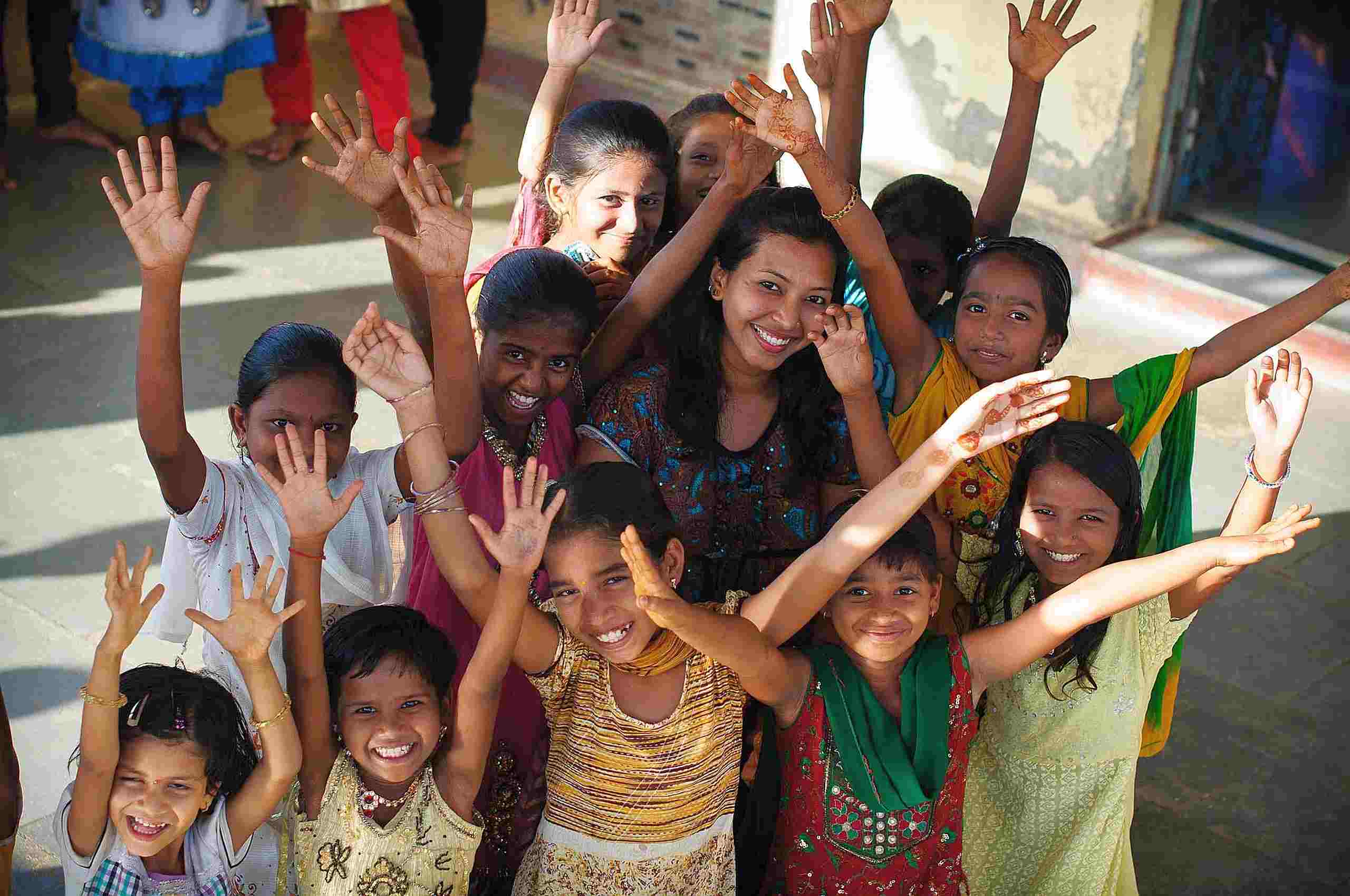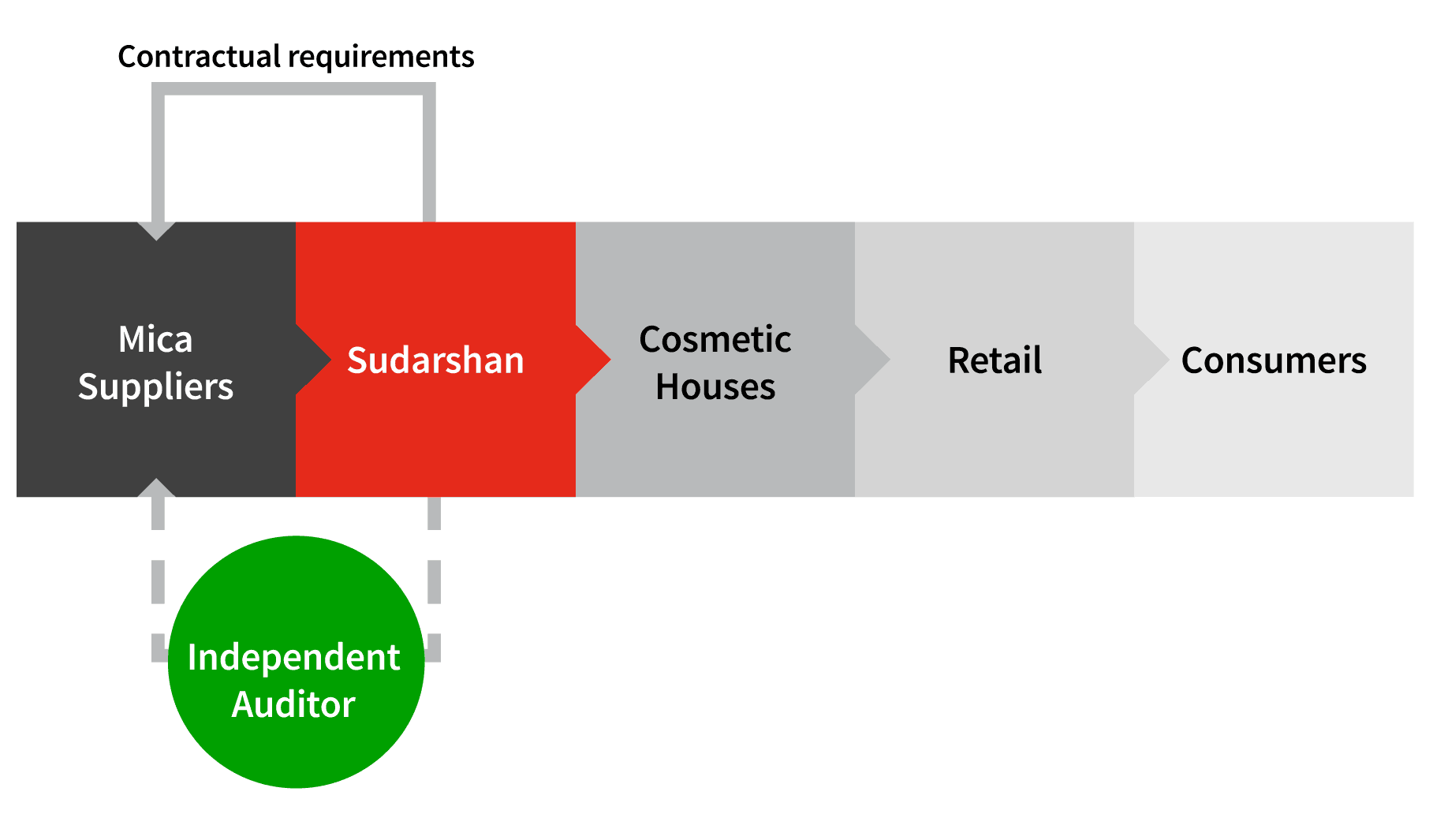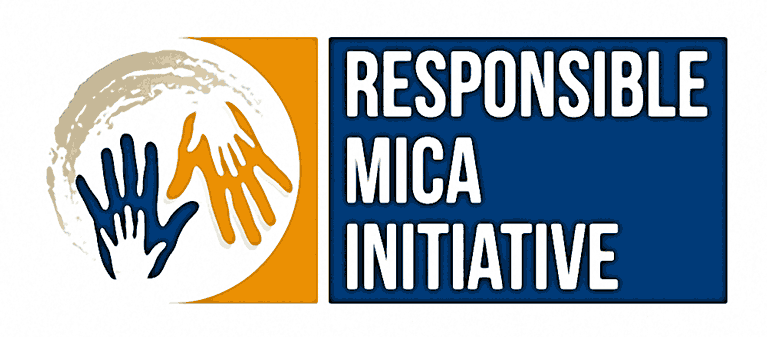5-step Action Plan Against Child Labour
To minimize risks in our supply chain and to fight child labour in general, Sudarshan has developed a five-step action plan, including clear vendor requirements, procuring directly from legally approved sources, implementing a transparent mica tracking system and cooperating with local and international organizations to make sustainable and long-lasting changes.

Clear vendor requirements
Sudarshan’s mica vendors contractually must meet the following requirements.
- All our mica would be procured only from government-approved and legal sources
- They must have a recruitment policy to enforce a minimum employee age of 18 years
- Their employees should be informed and trained to ensure full understanding of the child labour policy and adherence to all preventive measures
- They must make provisions at the processing units to ensure safety (PPE kits, etc.) and proper hygiene for all employees
- They must facilitate periodic health check-ups for all employees
- They must assign a compliance officer to ensure that the agreed child labour policies are implemented
- An independent third party will audit the vendor’s operations regularly on adherence to all guidelines
- We ensure that all our mica suppliers have fulfilled the statutory compliance
In case a vendor is unable to comply with our requirements, Sudarshan identifies the gaps and executes a change program to ensure this vendor implements the necessary improvements. However, if we then encounter non-compliance or inadequate control, we immediately terminate the vendor contract
Tracking Mica
Sudarshan is implementing a fully transparent tracking system to ensure that all lots of mica that arrive at our production facilities are from the designated controlled suppliers. This system ensures full control over the mica supply chain.
In compliance with government regulations, Sudarshan’s mica vendors must adhere to the following procedures:
- Vendor should daily record all sourced mica that is shipped to processing units
- Identically, formal records should be kept from all mica entering and leaving a processing unit
- Sudarshan monitors and crosschecks these records on a regular basis

Independent Audits
Sudarshan engages an accredited audit firm to verify and document that no child is employed in our entire mica supply chain. More precisely, the following aspects and procedures are monitored and audited multiple times a year, un-announced and at irregular intervals:
- Daily logs of sourced and shipped mica
- Employment records
- Age verification records
- Working conditions
Local and International Co-operation
Sudarshan is fully committed to combat child labour. We welcome an international joint approach over fragmented activities of individual companies. Therefore we are participating actively in discussions with organizations across the globe.
As a founding member of the Responsible Mica Initiative (RMI), we are closely collaborating with RMI on this front. With our membership we support the Community Empowerment Programs of RMI. Beyond that, we are actively involved in the Action Groups “Supply Chain Mapping and Workplace Standards”, “Legal Frameworks” and “Communication”.
Within the Action Group “Supply Chain Mapping” we have been part of the pilot project on blockchain technology and started to implement this internally. The purpose of this project is to provide members a reliable blockchain-based tool to document and communicate to RMI Annual Mica Volumes used for the production of Pigments and consumer products. This is to further enhance the traceability of mica streams in India and from India to the end consumer.
For more information about RMI, please see: www.responsible-mica-initiative.com

Social investment
A quick solution is rather difficult if not impossible as widespread poverty in the state of Jharkhand and Bihar is driving child labour. Given the complexity of the socio-economic context of these regions, an effective approach would need to involve government and industry as well as civil society.
We believe that a long term, sustainable solution calls for a collective social investment from all these stakeholders, focusing on community-based interventions, economic development and (collective) interventions in the supply chain. Again, Sudarshan is committed to play an active role in discussions about the way to go forward.